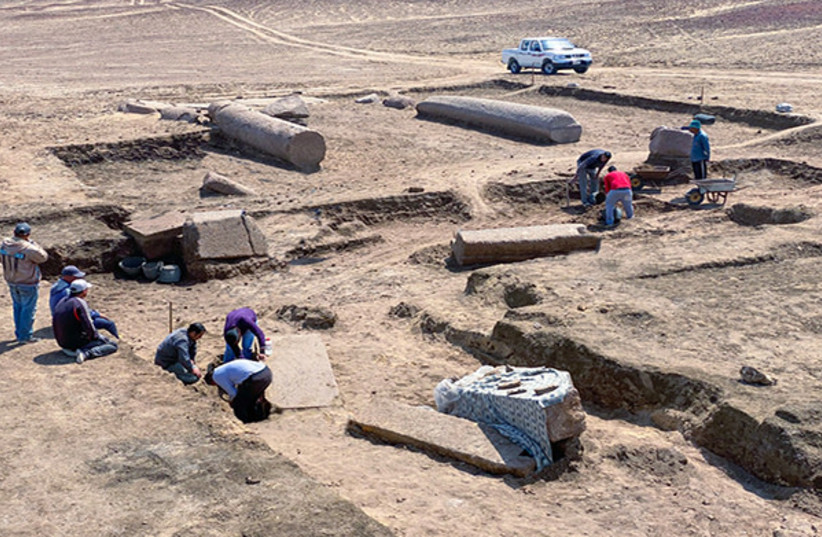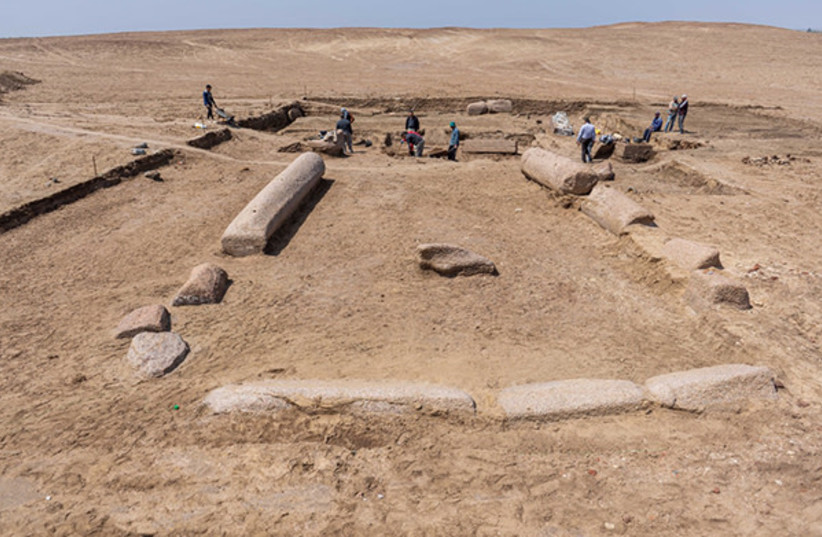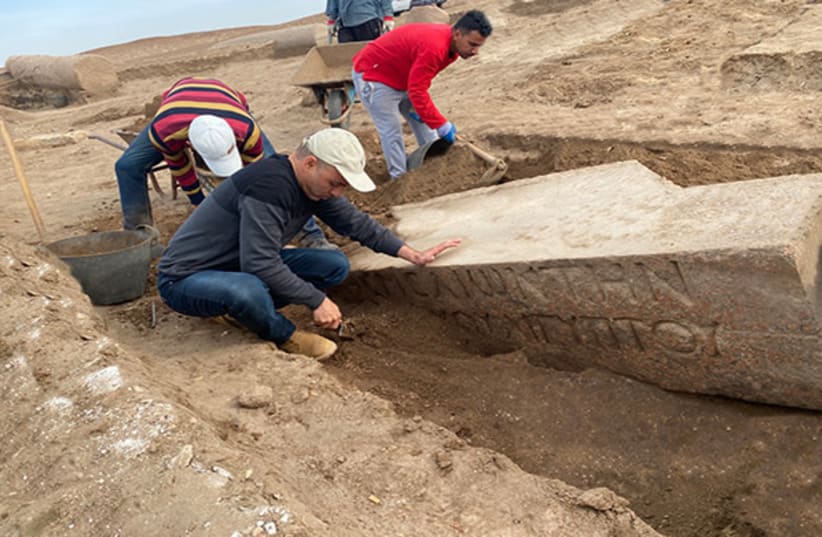Egyptian archaeologists have uncovered the remains of a temple to the god Zeus Kasios in North Sinai at the Tel al-Farma archaeological site, the ancient city of Pelusium.
The temple excavations took place at the site of remains of the heavy city entrance gate, whose two huge fallen granite columns were visible on the ground, Supreme Council of Antiquities Secretary-General Dr. Mustafa Waziri said in a press release. The gate had been destroyed in a powerful earthquake in antiquity, he said.
With its conflation of two religious identities – the Greek sky god Zeus and the ancient religious traditions of Mount Kasios – Zeus Kasios is an example of the legacy of religious multiculturalism in antiquity.
Mount Kasios is located along the modern-day border of Syria and Turkey, currently a military zone.
In Greek mythology, Mount Kasios is associated with the great cosmic battle that took place between Zeus and his greatest enemy, the storm monster Typhon, as they fought for supremacy. Even after having his tendons cut, Zeus was eventually able to defeat Typhon with his thunderbolt and buried him under Mount Etna.

The mountain, which is currently called Jebel al-Aqra, was also an ancient Canaanite cult site. It was considered sacred by several ancient cultures, sometimes as the home of all gods, and was where the storm god Ba’al Zephon was worshiped.
People of the ancient port city of Ugarit also venerated the mountain as the location of the palace of Ba’al and his sister Anat. Mount Kasios is mentioned in the Bible as Mount Zaphon.
The Hebrew word for the direction north, tzafon, is derived from Mount Zaphon because of its important position in northern Canaan.
The Greeks later transferred the cult god of the mountain to Zeus Kasios, or “Zeus of Mount Kasios.”
The Zeus Kasios temple in the Sinai was discovered about 200 meters west of Pelusium Castle and 100 meters south of a memorial church on the site, Waziri said.
The temple was built of mud bricks on a raised platform, and its ceiling was supported by columns of pink granite, the press release said. An ascending stairway covered with marble was likely used by worshipers to reach the temple platform.
First excavations at the site were carried out in 1910 by French archaeologist Jean Clédat, who discovered late Greek inscriptions on a lintel that indicated the presence of the temple. He was unsuccessful in uncovering the temple.
During this season’s excavation, huge stone blocks of pink granite were discovered on the streets around the temple. Archaeologists believe some of these, including the Corinthian capitals, were reused for building churches at Tel al-Farma, the press release said.

The original inscribed block discovered by Clédat was uncovered in the dig, along with another inscribed pink granite block.
According to the press release, the texts complement each other and indicate that Emperor Hadrian ordered new additions to the Temple of Zeus Kasios. Titus Falvius Titianus, procurator of Alexandria, carried out the work.
The city of Pelusium dates back to the late Pharaonic period continuing through the Greco-Roman and Byzantine periods. It was a Roman provincial capital and then later a Christian spiritual center.
An important border fortress city in the eastern extremes of the Egyptian Nile Delta, any military attack from the east first needed to conquer the city. Pelusium was meant to protect Egypt from attacks coming from the sea and from northern enemies in Syria.
In the eighth century BCE, Assyrian King Sennacherib, advancing from the Kingdom of Judah, attempted to invade Egypt and marched his army to Pelusium but retreated before attacking the city.
The Achaemenid Persian forces were said to have defeated the Egyptians in the Battle of Pelusium in 525 BCE by painting pictures of cat goddesses on their shields and sending cats, which the Egyptians considered sacred, to precede the warriors in their frontlines.
Dr. Hisham Hussein, director of Sinai archaeological sites, said experts were conducting a photogrammetric survey of the excavated blocks to aid in the reconstruction of the Zeus Kasios temple.
